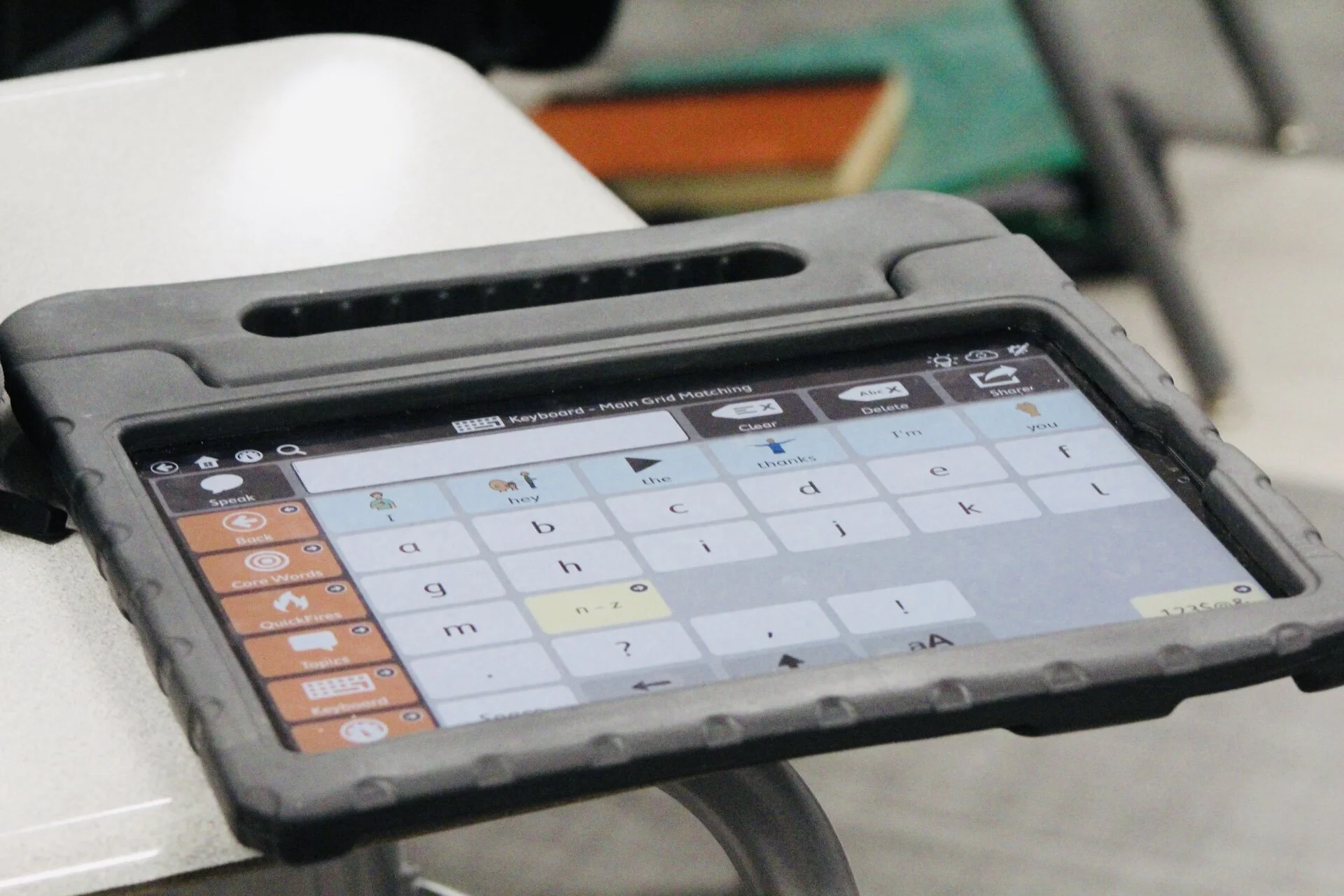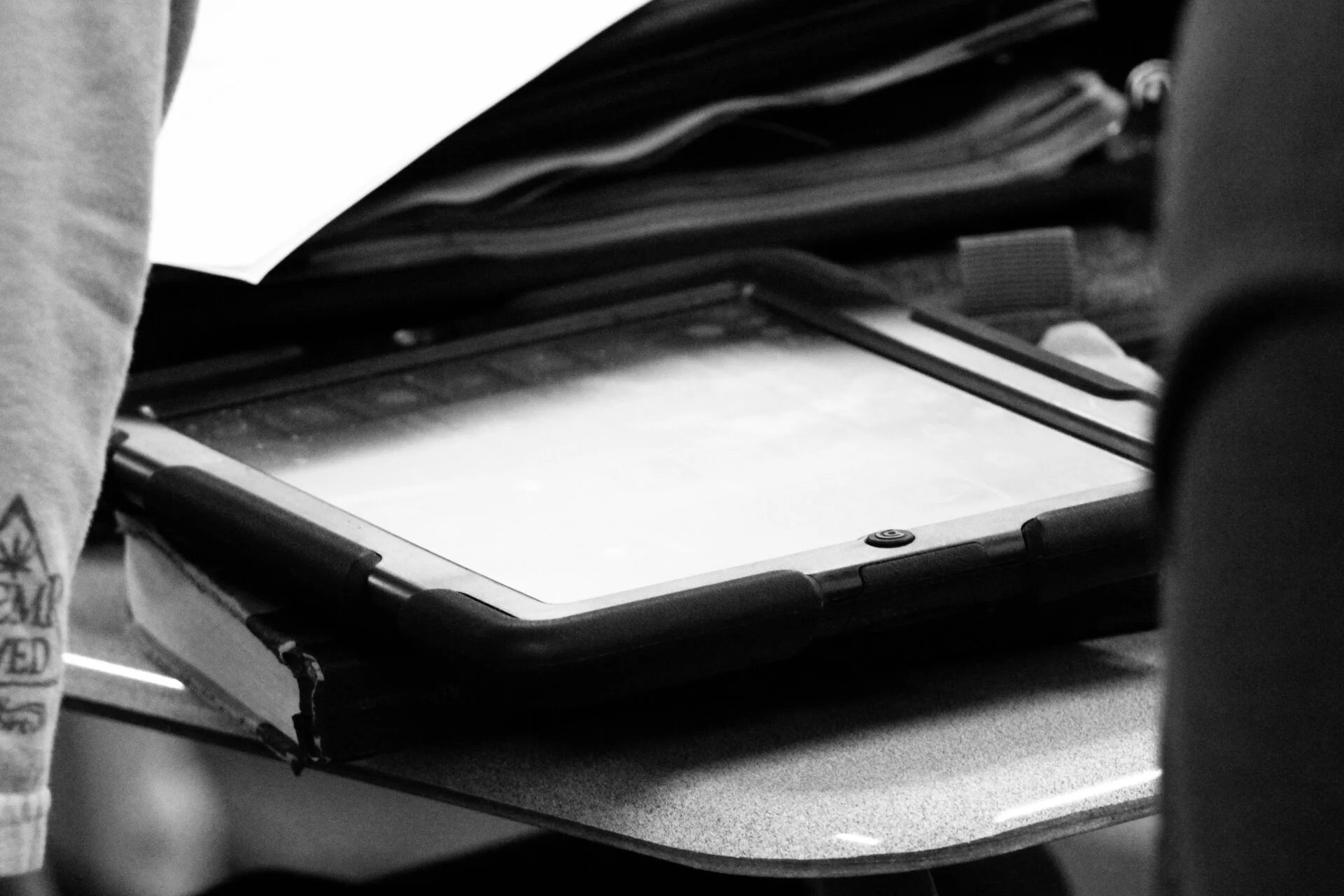Assistive Tech is Changing the World, Or at Least Hamilton High School
Article and photos by Cora Kuhlenbeck
It started as an idea. An idea to use innovation as a way to enhance people’s lives. This idea grew over time, constantly changing with the nuance of modernization. It evolved from the hearing aid, to the stair lift, to a wheelchair, and eventually, accessibility software. So what is this “idea” or this “it” that I am referring to? Assistive Technology is the answer, and it’s changing the world.
Assistive technology is any equipment used by individuals with disabilities to perform functions that might otherwise be difficult or impossible. This evolving technology is allowing people, especially students, to adapt to their environment, making it easier to communicate with others. One of the most popular technologies changing today’s classrooms is assistive communication applications.
Assistive or augmentative communication refers to communicating without actually talking. With the onset of modern technology, many people have been using this form of communication through apps downloaded on smart devices.
Most apps, like Avaz AAC and ChatterBoards AAC that can be downloaded on smart devices are laid out as digital boards that the user can customize to fit their communication needs. This could consist of pictures, words, phrases, and even full sentences of which are personalized to the user. When these buttons are then pressed, the device speaks whatever is on the key.
This assistive communication technology is showcasing the program SnapCore from the company TobiiDynavox.
So what are some key features of this technology?
Applications, like the ones mentioned above, offer users a wide range of personalization and communication that allows them to make the app their own. With over 15,000 words and pictures to choose from, people with speech-related disabilities are given a variety of options to customize multiple chat boards. These boards are able to be categorized by subject, making it easier to navigate the app and ultimately communicate with others.
Another digital board on SnapCore from the company TobiiDynavox that shows the organizational features of the app.
As many of you know, core words make up about 80% of what we speak during our typical day. Using a specific chat board for core words, assistive communication apps enable students to build sentences off of these words. This gives students the opportunity to grow steadily from using small phrases to full sentences.
For some students, they prefer to type out what they want to say, rather than speaking it. Assistive applications make it easier to do so with an optional keyboard mode. Users are able to create sentences with the help of a prediction system, spell check, and a quick bar, which speaks the words as they are typed.
Another function, if not the most profound, is the voice control. Within these apps, students are able to pick the name, language, and accent of the voice that speaks their thoughts. Some apps even go as far as allowing users to record their own voice. This is highly innovative because of the individuality and independence it grants the user.
How is Hamilton utilizing this technology?
Hamilton has begun to incorporate this modern technology into its everyday curriculum, especially for those enrolled in the special education department. These new applications are helping Hamilton students better communicate with their teachers, mentors, and peers. Instead of constantly trying to repeat themselves and getting frustrated with the lack of communication, students are able to effortlessly click or type words that speak exactly what it is they are trying to say.
Erik Ewan using assistive technology apps (SnapCore) on an I-pad in class. Courtesy of Mrs. Rauter
Matt Bornemann using an eye gaze device during a class meeting. Courtesy of Mrs. Rauter
Erik Ewan, a sophomore at Hamilton, states he likes “to use an I-pad in class. It helps me when I know the answer, but the words get lost.”
But Hamilton students aren’t the only ones benefiting from this technology.
Mrs. Zuberbuehler, a paraprofessional at Hamilton, believes “communication devices allow students to interact with peers and community members. They're able to have "small talk" conversations with cashiers, able to tell friends they like the song playing in the store, and inform teachers when they need help regulating themselves.”
Mr. Helm, a Hamilton Social Studies teacher, also believes AAC “gives students a voice and is truly a remarkable technology.”
Instead of constricting the learning environment of people with speech disabilities, AAC is allowing them to expand beyond their typical classroom and into those with their peers. Using this technology, students who struggle with speech are able to broaden their capabilities and connect with other students at the same level of communication. Mr. Helm recalls one of these amazing moments:
“I remember one time in particular in which we were playing a review game as a large group in preparation for a unit test. The game required students to recall content from the topic and share it with classmates. One of my students, who had access to AAC, used it when it was his turn. I posed a question to him and the other students he was competing against, he processed the question, and I can swear I saw a lightbulb turn on when he thought of the answer. He searched his AAC device and when he found the answer, he clicked on it, the device read the answer aloud, and the class cheered, clapped, and congratulated him. It was an amazing moment and one I'll never forget.”
How is assistive technology changing the world?
The world is built on communication. It’s the one thing humankind shares collectively, and yet, some people still struggle with it. That’s where assistive technology comes in. It is a transformative tool that is changing the face of education and bridging the gap in communication. Assistive technology is expanding the realm of inclusivity, making school, and the world, a better place.
“Communication devices help create an inclusive world for students. In the community, an effective way to communicate gives students the opportunity to express how they perceive their environment and their feelings...Through the use of communication devices, the door to independent interactions opens.” - Mrs. Zuberbuehler











